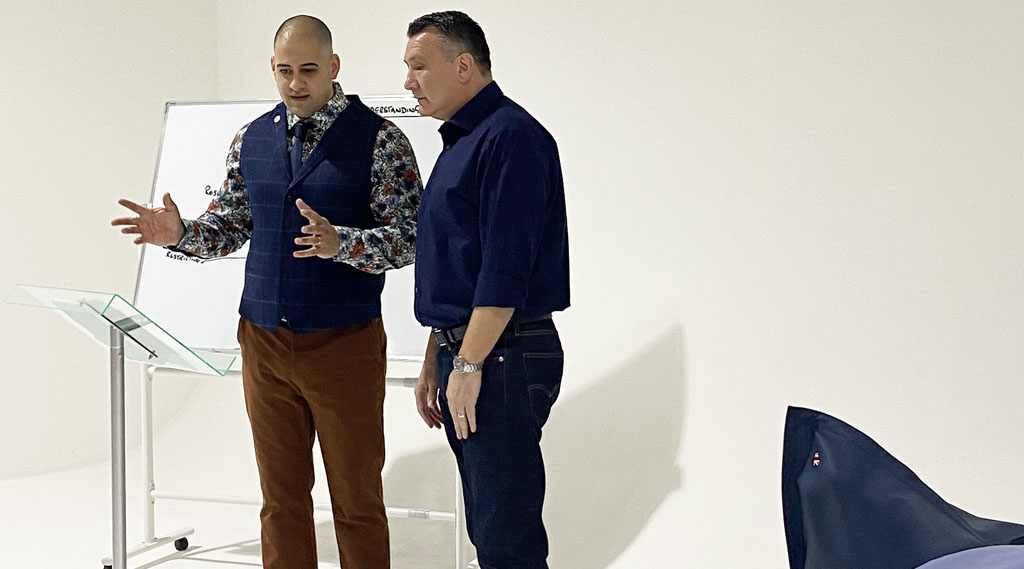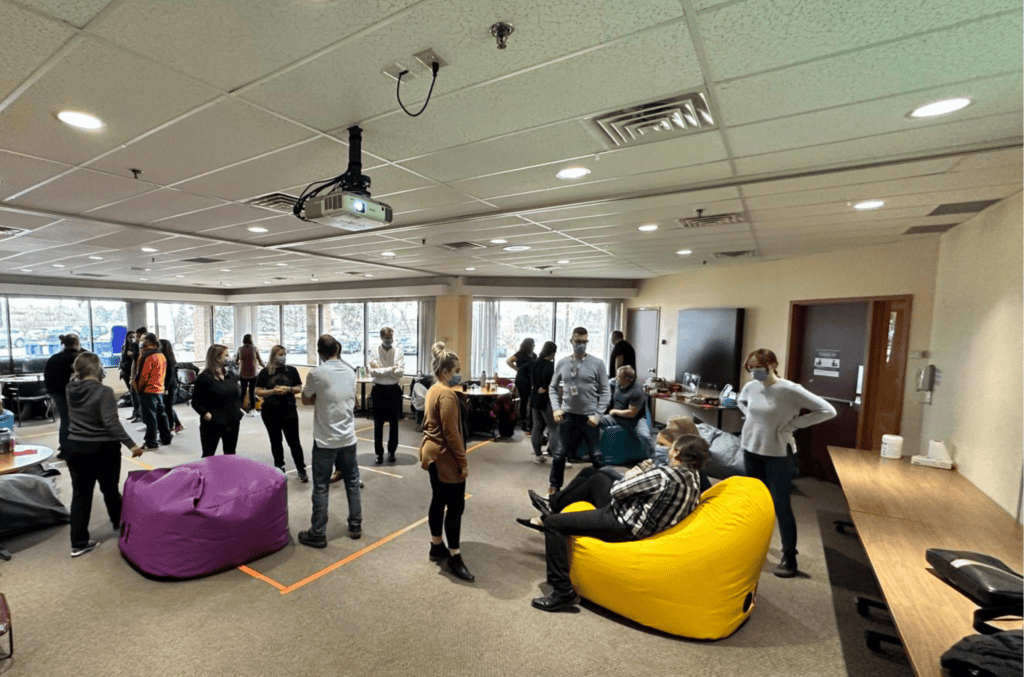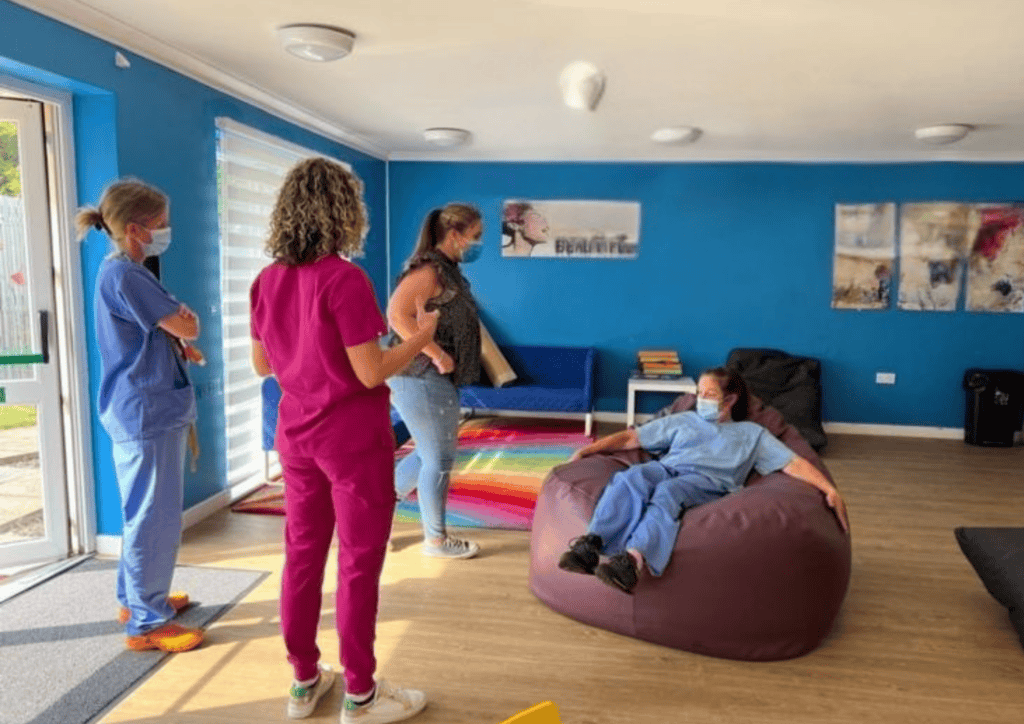The Future of Safety Innovation

Revolutionising Safety in Healthcare Settings and Transforming Violence Management
The healthcare environment is one where safety is paramount—not just for patients, but for the dedicated professionals tasked with caring for them. The potential for violent incidents in healthcare settings, particularly in acute or high-risk environments, creates an urgent need for effective, humane, and safe methods of handling these situations. Enter the Safety Pod, a revolutionary innovation that has rapidly become a game-changer in violence management within healthcare.
Safety Pods, along with their supporting products, are reshaping how healthcare professionals approach physical interventions and restraint situations. These innovations promise not only to safeguard staff and patients but also to offer a deeper, ethical understanding of restraint techniques and provide invaluable, real-time learning for all involved.
The Safety Pod: A Safer, More Effective Alternative to Ground Restraint
At the heart of the Safety Pod’s impact lies its ability to radically transform how violence and aggression are managed. Historically, physical restraint techniques often involved “going to ground” with an individual—an approach fraught with serious risks for both healthcare workers and patients. Ground restraint can lead to significant injuries, including strains, sprains, or worse, especially when applied in high-stress situations.
Gary Ross, an expert in acute healthcare settings, highlights the Safety Pod’s transformative potential:
“By providing a viable and far safer option to those tasked with conducting physical interventions than just ‘going to ground,’ we can drastically reduce the risks involved. My experience has shown me that the use of Safety Pods and supporting equipment ensures that all parties involved in specific restraint situations emerge with far less likelihood of suffering injuries or harm.”
This simple yet profound shift offers a safer way to manage challenging situations, reducing physical harm and enhancing the effectiveness of care provided. The Safety Pod’s award-winning design allows healthcare professionals to respond in ways that are not only safer but also more measured and controlled, fundamentally altering how violence management is approached in healthcare settings. A strategy proven across 100% of NHS Mental Health trusts.

Ethical Guidelines and Frameworks: Upholding Safety and Dignity
The ethical challenges in physical interventions are clear—restraint techniques must not only be effective, but they must also adhere to a strict framework that respects human dignity. Ethical guidelines governing physical interventions emphasise restraint as a last resort, prioritising de-escalation and communication wherever possible. However, the complexity of healthcare settings, with their high-stakes, high-pressure nature, often leaves staff facing difficult decisions under tight constraints.
Peter Turner, a violence reduction expert with experience in the most challenging high secure environments in the UK, stresses the importance of understanding the legal and ethical framework in physical interventions. “Whilst individual and corporate ethical guidelines are important, they are secondary to the fundamental understanding of the legal framework governing the use of physical interventions,” Turner explains. He adds that “the presence of proper training and equipment, such as the Safety Pod, is indispensable for reducing the risks associated with physical restraint”. In his experience, “Safety Pods provide the necessary foundation to minimise potential harm, reinforcing safety for both patients and healthcare providers”.
The Safety Pod doesn’t merely represent a physical tool; it also aligns with a wider ethical responsibility. By mitigating the risks of physical harm during interventions, it supports healthcare teams in adhering to their moral and legal obligations to treat all individuals with respect and care.

Overcoming Barriers: The Role of Safety Pods in Violence Reduction
The barriers to effective violence reduction in healthcare settings are numerous. From systemic challenges like insufficient resources, staff burnout, and inadequate training, to individual factors like stress and lack of experience, there are many obstacles that hinder effective violence management.
Turner identifies a critical issue: “Time and investment are the biggest barriers to effective violence reduction. Lack of resources, inexperienced staff, environmental constraints—these are just some of the challenges we face daily.”
But even in the face of these barriers, the Safety Pod offers an immediate, impactful solution. According to Turner, “Even without training, placing a Safety Pod within a stressful environment will have an immediate positive effect. With proper training and a creative approach, it transforms the opportunities for everyone involved.” The Safety Pod doesn’t judge or impose limitations; it simply provides a safe platform, offering an environment where everyone feels more secure.
This simplicity is part of what makes the Safety Pod such a powerful tool in reshaping healthcare environments. It is a tool that facilitates cultural change within organisations, helping to break down significant barriers and promote new, safer ways of managing challenging behaviour. Staff are not just trained to use a piece of equipment—they are encouraged to think and react differently to behavioural changes, fostering a culture of safety and care.
The Future of Violence Reduction: Innovation and the Safety Pod’s Role
As we look ahead, the future of violence reduction in healthcare holds exciting possibilities. Technology and new practices are paving the way for innovative solutions, but at the core of these advancements will be a continued emphasis on safety, compassion, and respect.
Peter Turner remains optimistic about the potential for further innovation in violence management: “I’m excited about the future success of the Safety Pod. The Safety Pod is not just a tool—it’s a cultural shift in how healthcare institutions approach safety and violence management. By providing a safer alternative to physical restraint, aligning with ethical frameworks, and overcoming barriers like lack of resources and inadequate training, the Safety Pod is a cornerstone of modern violence reduction strategies in healthcare settings”.
As healthcare facilities continue to confront the challenges posed by violence, the Safety Pod offers a clear path forward—one that reduces harm, promotes a culture of safety, and supports both patients and staff. Its role in the future of violence reduction looks set to expand, providing new opportunities for training, care, and improved outcomes in healthcare settings globally.

